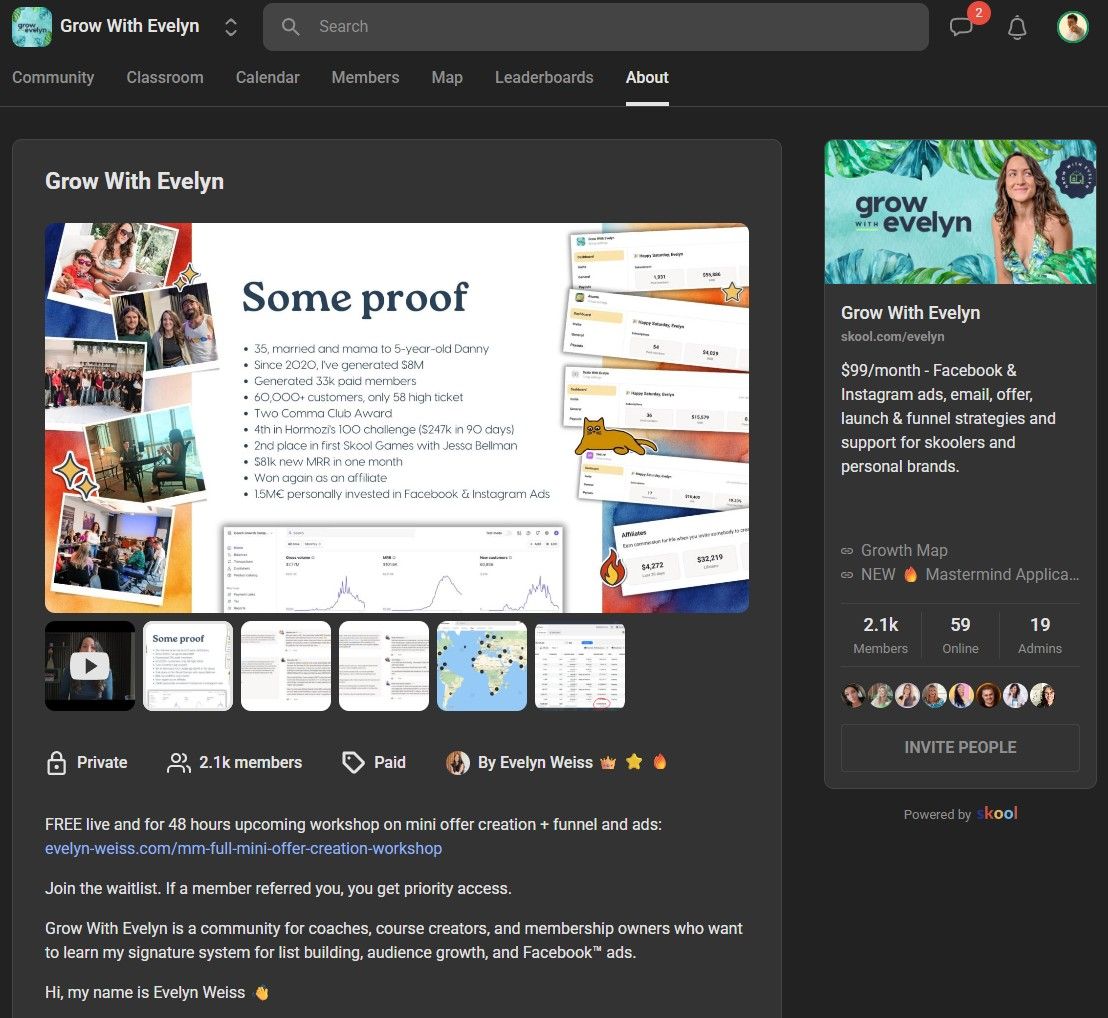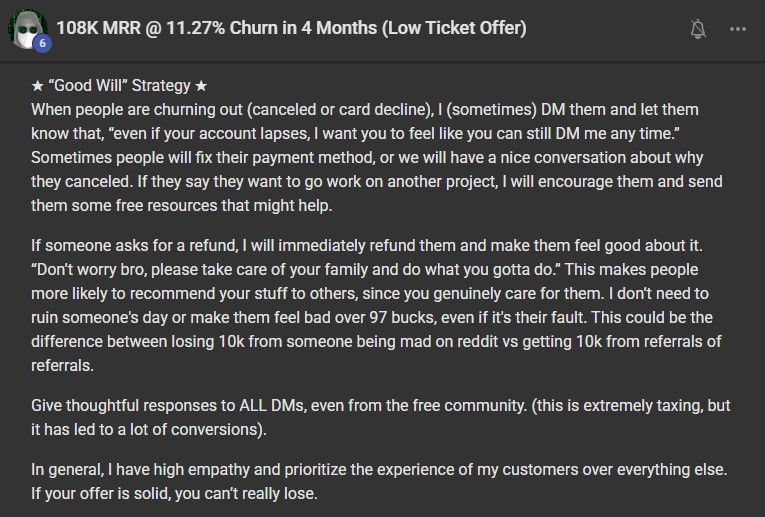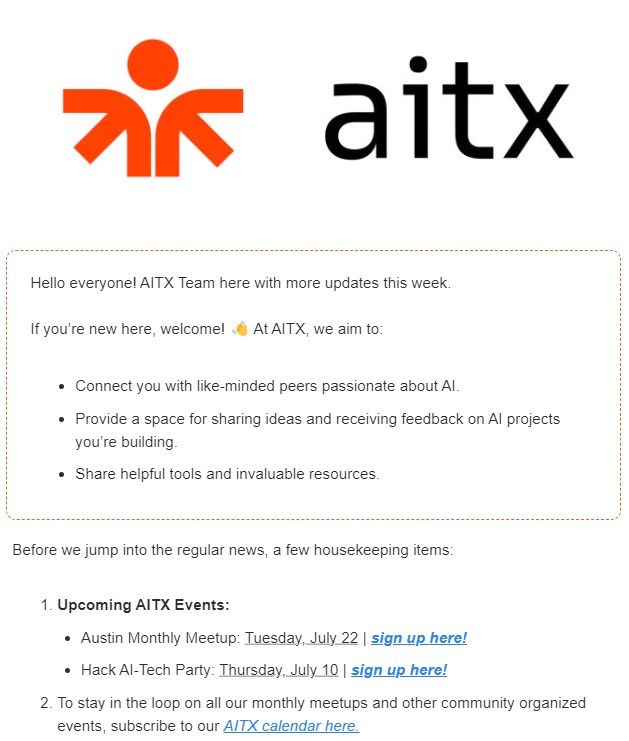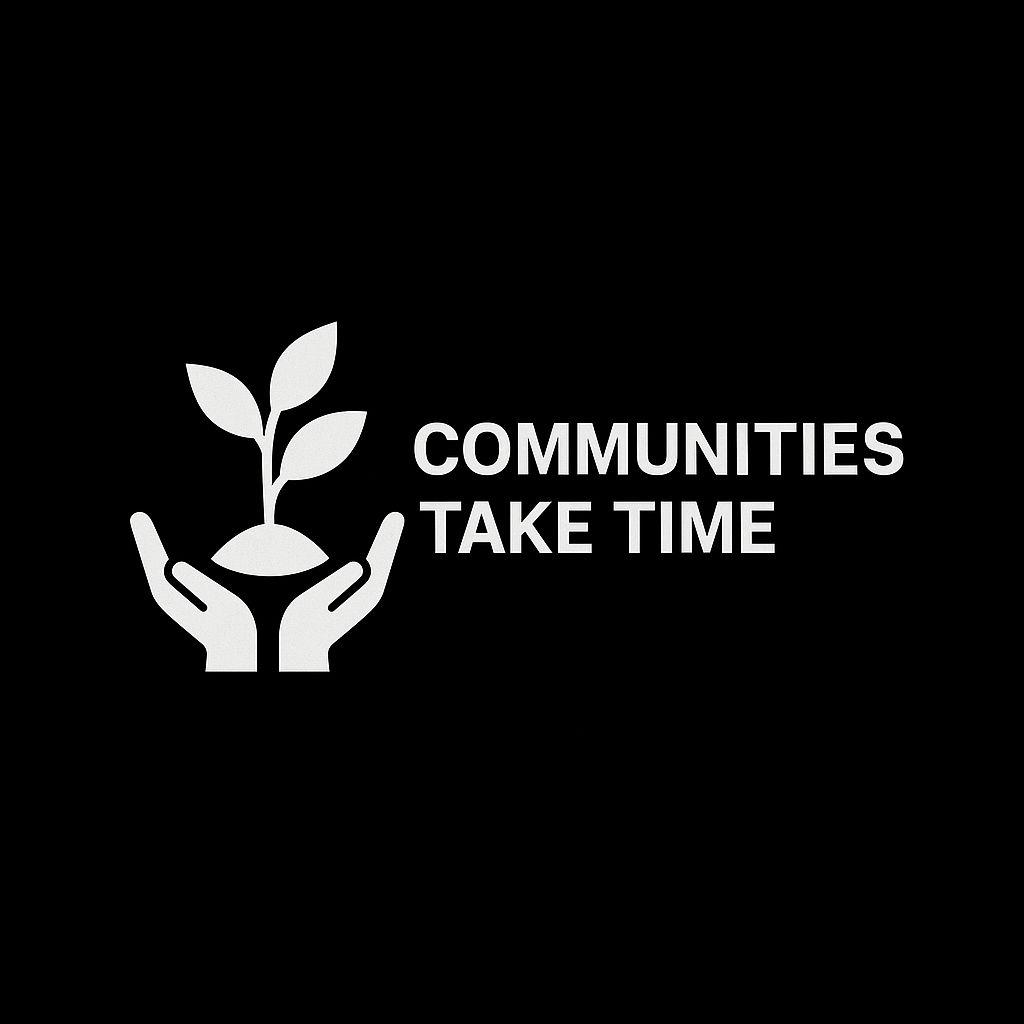I’ve been in the community building space for the past 11 years. I’ve built subreddits like r/competitiveoverwatch to its first 150,000 members. I’ve grown a dev community to 1500 people in a month, and led project communities for monday.com when I was leading the advocacy efforts there.
Long story short, there’s a few key things that make up a truly healthy community, and part of how we evaluate communities here at proveworth.com.
The beauty of the best communities we’ve seen here and dug in, the founding story is often similar. “We just had a few friends and it grew from there.”
Good communities are like parties. If you don’t know anyone there, you feel left out. Great parties have you leave with more friends than you had when you walked in.
Those regulars shape the culture, and that’s by far the most important thing the best communities get right.
Here are the seven key traits that I’ve seen the best communities nail repeatedly:
- Clear Shared Purpose: A strong community has a well-defined mission that guides discussions and decisions, keeping members aligned and engaged.
- Member-Led Contributions: Active regulars who share their expertise, organize events, and create value for others.
- High Signal-to-Noise Ratio: Quality content outweighs irrelevant posts, ensuring discussions are productive / valuable.
- Visible Outcomes: Members achieve measurable results, sharing their progress and lessons to inspire and inform others.
- Trusted Leadership: Fair, consistent moderators set the tone, manage conflicts, and empower members to take part in maintaining the community.
- Consistent Engagement Without Burnout: Participation feels natural and voluntary, avoiding pressure or over-reliance on constant activity.
- Off-Platform Relationships: Strong connections extend beyond the platform, leading to collaborations, meetups, and deeper bonds.
If you want a great example of this, check out Robbie Sko’s interview and community!
1. Clear Shared Purpose
Every strong community is built on a clear, shared purpose.
When evaluating communities, I look for signs that their shared purpose actively guides behavior. Healthy communities show this through aligned discussions and members who naturally steer conversations back on track when they drift.
Data backs this up: members who feel connected to a clear, larger mission are over three times more likely to stay engaged and 1.4 times more likely to perform at higher levels. I’ve seen this play out when members can clearly explain how their contributions support the community’s mission. They get the culture and help shape it.
This clarity doesn’t just improve retention - it simplifies the day-to-day. Purpose-driven communities make decisions more efficiently because the "why" is always front and center.
One community that does this fantastically is Evelyn Weiss’s Grow with Evelyn.

Members there instinctively know what content fits, which discussions deserve focus, and how to handle off-topic posts. A strong purpose acts as a natural filter, cutting down on the need for heavy moderation.
Another benefit? Communities with a well-defined purpose tend to attract the right people. A specific and openly communicated mission naturally draws in those who are genuinely interested and filters out those who aren’t. This self-selection process fosters a more engaged and committed membership. On the flip side, communities without a clear purpose often feel scattered and struggle with shallow engagement.
The impact of purpose is undeniable - 70% of employees link purpose to productivity, and the same principle applies to community participation. A lack of purpose undermines focus and momentum. I saw this all the time with numerous communities I created while at monday - if we didn’t make the purpose clear and help bring them into our vision people naturally drifted away.
When assessing a community’s clarity of purpose, I look for a few key indicators: members should be able to articulate the mission, keep discussions relevant, and help new members quickly align with the goals. These are the signs that purpose is woven into the community’s culture - not just empty words.
2. Member-Led Contributions
The most vibrant communities don’t rely solely on founders or moderators to drive every interaction.
They thrive because members step up to share their expertise, answer questions, and create value for one another. This is what sets flourishing communities apart from those that feel staged or overly controlled.
It blew my mind talking to a former executive at Salesforce one day. I was eager to learn the silver bullet for building amazing communities like what Dreamforce has become. For context - they have an entire conference that is community led. All Salesforce does is cut the check.
You know what he told me?
"It all started because we took two customers, put them in a nice room and shut the door.”
That’s it.
Sometimes all it takes is just being a good connector of people.
Take Exit Five, for example. In this community, members take the lead in organizing events. During one session I heard of, a member hosted website teardowns, where participants submitted their B2B websites for expert feedback. It wasn’t a top-down presentation - it was members teaching members. This kind of interaction builds genuine expertise and trust that no official resource could replicate.
When members contribute based on their own experiences, the advice feels more relevant and impactful. SUPER good signal for trust.
I’ve seen newcomers receive actionable guidance from seasoned practitioners that outshines anything a formal program might offer. Some of the best insights I get inside of communities is from new members sharing.
Other communities operate with similar dynamics. In the Miro Hero community, members host show-and-tell sessions, provide product feedback, and mentor new participants. Their MVP program highlights the top 5% of contributors.
What’s compelling about this model is how it nurtures leadership organically, creating pathways for members to grow within the community. This kind of participation doesn’t just strengthen the group - it lays the groundwork for long-term stability. The good stuff.
The numbers back up these observations. Communities with strong member-led contributions report 21% higher engagement overall. Even more impressive, 68% of branded communities say member-driven activity helps generate new leads. This highlights how peer-driven guidance fosters trust and connection, which are critical for growth.
When evaluating member contributions, I look for specific signs of engagement. Active members do more than just show up - they participate in discussions, share content, interact with others, attend events, and create meaningful contributions.
Sustainability is key here. Member-led contributions are the backbone of thriving online communities. When members take ownership of creating value, the community becomes more resilient and less dependent on any single leader. This distributed model of ownership fosters a kind of durability that top-down communities often lack.
Healthy communities naturally encourage and celebrate these contributions. Members acknowledge each other’s efforts, celebrate successes, and offer thoughtful feedback. This mutual support creates a positive cycle, motivating even more participation.
Over time, this dynamic evolves into something truly unique. Conversations deepen, response times improve, and a distinct culture emerges - one that can’t be duplicated anywhere else.
3. High Signal-to-Noise Ratio
Finding meaningful content in many online communities often feels like searching for a needle in a haystack. What sets thriving communities apart from those that waste your time boils down to one key factor: the signal-to-noise ratio. In well-functioning spaces, most posts and comments deliver genuine value rather than being bogged down by idle chatter or blatant self-promotion.
One thing I noticed early on is how quickly you can assess a community's health by simply scrolling through its recent posts. In high-quality groups, I found myself bookmarking insights and noting down actionable advice. Often I’d message or reply right away to the highest value folks.
On the flip side, some spaces were overrun with mundane greetings or relentless self-promotion, leaving me frustrated.
Joshua Goldfarb, Field CISO at F5, captures this idea perfectly: "In other words, the more you have of what you want, and the less you have of what you don't want, the easier it is to measure something". In essence, the balance between valuable content and unnecessary clutter determines how easy it is to extract real value. Healthy communities seem to self-regulate, with members sharing specific challenges, offering detailed, experience-based solutions, and asking thoughtful questions that lead to productive discussions.
Communities with a low signal-to-noise ratio are often plagued by off-topic chatter and spam. Excessive small talk, self-promotional posts, and irrelevant discussions can quickly overwhelm a feed.
While occasional off-topic posts are inevitable, a constant stream of them signals deeper issues. In online forums, this "noise" disrupts meaningful conversations and makes it harder to find useful content. Communities with clear content standards filter out these distractions, fostering an environment where quality contributions thrive.
It's not just about the number of responses but their quality. A community with 50 well-thought-out answers to a complex question is far more valuable than one flooded with 500 generic "great post!" comments.
Over time, the most effective communities I've participated in have established clear content guidelines. Posts include specific examples, actionable insights, and well-researched questions. Discussions build on previous points, creating a dynamic exchange of ideas rather than repetitive commentary.
Prioritizing quality over quantity has another benefit - it builds a searchable knowledge base. As valuable content accumulates, the community becomes a resource where newcomers can find answers without rehashing old questions. Meanwhile, experienced members stay engaged by learning as they contribute. A high signal-to-noise ratio not only attracts quality participation but also sustains the community's vitality in the long run.
4. Visible Outcomes & Transformations
Communities thrive when their value is evident, and nothing showcases that better than visible, measurable outcomes. The most impactful communities consistently highlight real, concrete results achieved by their members. These aren't just feel-good anecdotes; they're genuine milestones that reflect the community's influence.
Members naturally share their progress. You’ll often see updates about launching products, gaining new clients, or solving problems that were once hot topics in group discussions. For example, in one entrepreneurship community I joined, a member shared how feedback from the group helped her fine-tune her SaaS pricing model, leading to a noticeable boost in conversion rates in just a few weeks. Another member walked us through his journey from an early-stage concept to generating steady recurring revenue, crediting specific advice and connections he made within the group. These kinds of updates spark conversations about the credibility and authenticity of the results.
What sets authentic outcomes apart is the level of detail. In trusted communities, members often back their claims with screenshots of performance metrics, links to their launched projects, or references to key discussions that sparked their breakthroughs. This transparency not only builds trust but also helps others see what’s possible and how it was achieved.
To maintain this level of trust, verification is essential. As communities grow, simple steps like linking professional profiles or peer validation can help ensure that shared outcomes are genuine. The best communities implement these measures effectively, balancing openness with accountability.
What makes these outcomes even more compelling is the context. Members don’t just announce their wins - they outline the timeline, the obstacles they faced, and the lessons they learned along the way. They share not only what worked but also what didn’t, offering actionable insights for others navigating similar challenges. This level of detail transforms success stories into valuable learning opportunities.
When evaluating a community, I always look for this pattern of documented progress. It’s the clearest sign that being part of the group leads to real, meaningful results. Communities that consistently deliver visible transformations naturally attract serious, growth-focused participants. Over time, this creates a feedback loop: the more the community fosters genuine progress, the more it draws in members who are committed to achieving - and sharing - real results. This dynamic strengthens the community’s overall impact and ensures it remains a hub for continuous growth.
sbb-itb-494c2a9
5. Trusted Leadership or Moderators
Strong communities thrive under leaders who earn trust through fairness and consistency. I’ve seen many promising communities falter when moderators either disappear or become too controlling. The best leaders don’t demand respect - they earn it by setting a positive example and enforcing guidelines without bias. This balanced approach shapes the tone for all future interactions.
Great moderators are often like a steady hand on the wheel - present but not overbearing. They guide discussions subtly, ensure quieter voices are heard, and manage heated debates with tact. Instead of taking sides, they acknowledge differing opinions and steer conversations toward constructive outcomes. Community expert Naor Narkis explains it best:
"The best community leaders I know, know how to give a stage to others and do not want to take all the credit for themselves."
Trusted leaders share several standout qualities. They show empathy when members face challenges, spot potential problems early through pattern recognition, and maintain firm but fair boundaries. They also know how to use platform tools effectively while staying emotionally attuned to the community’s needs.
What truly sets exceptional moderators apart, though, is how they handle conflict. Nick Quinn, a Community Moderator at Shopify, offers valuable advice:
"I think the best advice for moderators is not taking things personally. Members often vent, so a moderator must remove personal emotion. Being able to remove any personal emotion or feeling goes a long way in terms of doing what needs to be done but also not having any baggage after work ends with any Community users."
One of my favorite folks in the space, Josh Madakor gave great perspective.

Josh runs the Cyber Range where people can practice cybersecurity. He built the whole thing in Microsoft Azure and licensed a bunch of stuff for people to learn with. Insanely cool.
But I loved how he just clarified his human decency and desire for people to win into a strategy that builds up his business. He doesn’t make people feel bad when they leave his group, or that they even lose access to his help and perspective once they go.
Signals of a true leader.
Another hallmark of effective leadership is empowering members to take an active role in moderation. By enlisting engaged participants to handle routine tasks and creating systems for flagging and addressing minor issues, moderators encourage a sense of ownership among members.
Over time, this fosters a self-regulating community where members take pride in maintaining its culture and standards. This member-driven approach not only resolves conflicts but also strengthens the community’s identity, ensuring long-term, organic engagement.
6. Consistent Engagement Without Burnout
Many communities start strong but stumble when they rely too heavily on forced engagement. It’s a pattern I’ve seen repeatedly: when participation feels like an obligation rather than a choice, both members and moderators can quickly lose steam. It’s killed more than a few of the communities I’ve loved being in.
The most successful communities, however, embrace a more natural rhythm - one that respects the energy of members and the capacity of moderators.
The difference becomes obvious when you look at posting habits. In communities where engagement is pushed, daily prompts often lead to surface-level responses, with members apologizing for being "inactive" and moderators resorting to guilt trips or gamification to spark activity. In healthier spaces, members contribute only when they genuinely have something to share. This results in a steady stream of meaningful content without creating unnecessary pressure.
Conducting so many community audits at ProveWorth, I’ve seen what sustainable engagement looks like in action. Members might go quiet for weeks, only to return with deeply thoughtful posts about personal breakthroughs or experiences. And that’s totally ok.
This voluntary rhythm not only keeps the content valuable but also ensures that participation feels rewarding rather than draining. It’s a win-win: members stay engaged on their own terms, and moderators aren’t overwhelmed.
From a moderator’s perspective, avoiding burnout requires careful planning. Discord’s community guidelines put it well:
"When moderating begins to feel like a chore, as opposed to a hobby, that's when you might feel like moderator burnout has set in."
Communities that demand constant activity often exhaust their most dedicated contributors. The most resilient groups I’ve observed establish clear boundaries. They prioritize quality over quantity, avoid expecting round-the-clock availability, and encourage members to take breaks when needed. This approach creates a space where people return refreshed, not resentful.
Moderator burnout is a real challenge, especially given the stress that comes with managing difficult content. High stress can lead to errors, slower decision-making, and a decline in overall community quality. That’s why smart community leaders take proactive steps to support their moderators. They conduct regular check-ins to assess stress levels, provide training, and use tools to lighten the workload. For members, features like customizable notifications and open discussions about managing online time can also help reduce the strain.
Consistency doesn’t mean intensity. Communities that thrive over the long haul focus on organic engagement. They create an environment where participation feels natural, not forced, allowing authentic connections to flourish without burning anyone out.
7. Off-Platform Relationships & Collaboration
The most thriving communities share a common thread: their members build connections that extend beyond the original platform. When people take conversations to direct messages, hop on video calls, or even meet face-to-face, it’s a clear sign that the community has fostered something more meaningful than casual interaction. These off-platform relationships are a strong indicator that the community is delivering real value, laying the groundwork for relationships that endure.
In my work auditing communities at ProveWorth, I’ve consistently observed this pattern. Members who find genuine value in the community naturally deepen their connections. They exchange contact details, form mastermind groups through video calls, or organize local meetups. This behavior demonstrates that the community isn’t just a space to pass time - it’s a place where meaningful professional and personal relationships take root.
One of my favorite local communities is called AITX and I look forward to their email updates every month.

The Sense of Community Index (SCI) highlights this dynamic as a critical measure of community health. Research underscores the importance of off-platform engagement, showing that communities with active external connections see retention rates up to 30% higher than those confined to on-platform interactions.
These connections often take many forms: members collaborate on shared documents, engage in private chats, or even launch business ventures together. Community leaders sometimes play a pivotal role here, arranging virtual coworking sessions or in-person gatherings. These deeper bonds often become the most impactful outcomes of being part of the community, surpassing the value of public forum discussions.
From a sustainability standpoint, off-platform relationships create a ripple effect that strengthens the entire group. Members who feel truly connected are more likely to stay active, invite others to join, and share valuable content. They become ambassadors, organically expanding the community through their personal networks. This network effect reinforces the community’s purpose and ensures its long-term vitality.
On the flip side, communities that limit interactions to the platform often face challenges with retention and engagement. Without the trust and connection that come from personal relationships, these spaces can feel transactional rather than transformative.
When assessing a community, I always look for signs of member-driven meetups, collaborative efforts, or success stories that originated within the group. These are key indicators of a healthy, thriving community. Spaces that provide structured opportunities for members to forge deeper connections are far more likely to support meaningful, lasting relationships.
The Best Communities Grow Slow
Years of observing and analyzing communities have shown me one thing: activity alone doesn’t guarantee value. Some of the busiest communities, brimming with posts and interactions, can lack substance, while smaller, quieter groups often foster deeper connections and meaningful outcomes. These seven signs help cut through the noise, highlighting communities that genuinely deliver value.
With 84% of users participating in virtual communities and 83% actively sharing content, there’s no shortage of options. But the true challenge lies in finding quality. Communities that thrive on a clear purpose, member-driven contributions, strong signal-to-noise ratios, visible outcomes, trusted leadership, consistent participation, and meaningful connections beyond the platform stand out as spaces that create lasting impact. These numbers are a reminder: size and activity don’t always reflect a community’s true worth.
One pattern I’ve noticed is that bustling communities often mask shallow engagement. A group with 10,000 members and hundreds of daily posts might appear vibrant, but without depth, it can lead to burnout and disconnection. On the other hand, a community of just 500 engaged members - those who collaborate, celebrate each other’s successes, and build relationships beyond the platform - often achieves far greater results.
"A fundamental lesson for the community organizer is that you don't organize people to do something you think should be done; instead, you find out what is important to people in the community, and then help them reach their goals." – Community Tool Box
This quote perfectly captures why these seven signs matter. They help distinguish whether a community is truly serving its members or just generating activity for the sake of it. The difference is crucial - it determines whether your time in a community leads to genuine connections and growth or leaves you feeling drained.
When evaluating communities, I focus on member feedback, the quality of interactions, and how well the structure supports meaningful engagement. Communities that consistently meet these criteria create spaces where members feel safe to share their challenges, celebrate achievements, and form authentic professional relationships. These seven indicators confirm that the best communities respect your time and foster genuine connections.
Ultimately, the right community should align with your values and goals. It’s not about choosing the largest or loudest group - it’s about finding one that supports your aspirations and makes your time worthwhile. Communities that embody these seven traits stand out as spaces of transformation, not just transaction. In a world where anyone can start a community, the real value lies in finding the ones that truly deserve your attention.
FAQs
How can I tell if an online community has a clear purpose that aligns with what I’m looking for?
To figure out if an online community aligns with your interests, start by examining its mission or goals. A solid community purpose often highlights who it’s meant for, the issues it tackles, or the values it stands by. Pay attention to how the leadership communicates this purpose - it should guide members and clarify their role in the group.
A well-functioning community makes its purpose easy to grasp. This might come through a mission statement, clear group rules, or the way members engage with each other. However, if the purpose seems unclear or too broad, the community might lack the focus needed to truly benefit its members.
How can I encourage members to contribute more actively in my online community?
Creating an environment where members feel valued is key to encouraging active participation. Start by asking open-ended questions that invite meaningful discussions and give members a chance to share their thoughts and experiences. Acknowledging contributions, whether through a simple thank-you note or a public shoutout, can make a big difference in showing appreciation.
To keep motivation high, consider offering special perks or roles for those who actively participate. This could include early access to resources, unique opportunities, or leadership roles within the group. Personal outreach is equally powerful - reaching out directly to members to express gratitude and encourage them to contribute more can strengthen their connection to the community. When people know their input is valued, they’re far more likely to remain engaged and contribute regularly.
Why does a high signal-to-noise ratio matter in an online community, and how can it be achieved?
A strong signal-to-noise ratio (SNR) is crucial for any online community. It ensures that meaningful, high-quality content stands out, rather than being overshadowed by irrelevant or low-value posts. Communities with a solid SNR are easier to navigate, more engaging to participate in, and inspire greater trust among their members.
To keep the SNR high, it’s important to encourage thoughtful and relevant discussions. You can achieve this by setting clear community guidelines, motivating members to share valuable insights, and actively moderating to reduce distractions or off-topic chatter. When members consistently find worthwhile conversations, they’re more likely to return, contribute, and feel invested in the community.


